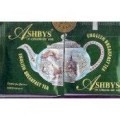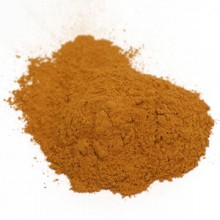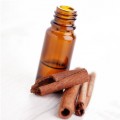 Loading... Please wait...
Loading... Please wait...- Home
- About Us
- Shipping, Returns & FAQ's
- Contact Us
-
For Your Information
- Canadian Customers Have a Choice if Shipping Via UPS
- Aura Cacia Homemade Aromatherapy Recipes
- Bella Nella Altered Art & Paper Crafts Blog
- Forms of Herbal Preparations
- Laundry Tips To Conserve Energy Blog from The Laundress
- The Story of Frontier Natural Products Co-Op
- Sovereign Silver Hydrosol and Aloe Protocol Stops Downward Spiral of Gut Dysbiosis
- Disclaimers
- Recommended Links
- RSS/Recent News
- The Story of Typhoon Housewares
- Reviews/Testimonials
- Raw Ingredients for Mfg
Cinnamon Bark Powder/Granules/Chips/Sticks Bulk
Product Description
 Although in Europe and the U.S. cinnamon is most often associated with sweet dishes, it has broad culinary uses. For example, in India, cinnamon is never used with desserts, but is the main ingredient in curries. In North Africa, not only is cinnamon an ingredient in Raz-el-Hanout, the flavoring of couscous and tagines, but appears also in Berber spices. In Greece, it appears in lamb dishes.
Although in Europe and the U.S. cinnamon is most often associated with sweet dishes, it has broad culinary uses. For example, in India, cinnamon is never used with desserts, but is the main ingredient in curries. In North Africa, not only is cinnamon an ingredient in Raz-el-Hanout, the flavoring of couscous and tagines, but appears also in Berber spices. In Greece, it appears in lamb dishes.
And it is an essential spice in Chinese cuisine. Ground, it is one of the constituents of five-spice powder; whole, it is frequently added to flavor braised dishes.
In the Caribbean, it is in Jerk seasoning. In Mexico, it appears with chocolate and chili powder in Mole sauces. In the U.S., it is used in barbecue rubs and sauces.
Cinnamon is the bark of three bushy evergreen trees of the laurel (Lauraceae) family. The most fragrant and delicate cinnamon is obtained from the Cinnamomum zeylanicum tree native to Sri Lanka (which used to be called 'Ceylon'), the western coast of India (known as the Malabar coast), and Burma. Zeylanicum cinnamon is sometimes called 'true cinnamon' and 'old fashioned cinnamon.' But the 'true' part was just advertising copy for the Dutch East India Company's 17th century monopoly.
Cinnamon is also derived from the Cinnamomum loureirii and burmanii trees native to Indonesia and the Cinnamomum cassia tree native to China, Vietnam, and Sumatra. The cinnamon from the loureirii, burmanii and cassia trees is darker and more pungent and aromatic than cinnamon from the zeylanicum tree.
Neither Grieve, King nor Felter distinguish the cinnamon varieties medicinally – Grieve simply asserting that they all act alike, and King's covers all varieties in one listing, as 'The barks of numerous species of Cinnamomum.' Medicinally, they all act the same, although there are subtle taste differences.
Cinnamomum Cassia has a more intense and less fragrant aroma than zeylanicum (Ceylon) cinnamon. It is sweet, warm, pungent, and slightly astringent. Zeylanicum (Ceylon) cinnamon is pale in color, and more delicate, more fragrant, not as pungent, and not as sweet. It has a slight citrus flavor. Zeylanicum (Ceylon) cinnamon is more expensive than cassia, and better to use in sweet dishes and cakes.
Cassia nips the tongue and is more suited to spiced meats, stews, rice dishes, curries, pancake and waffle batters, cinnamon rolls, and flavored drinks. Cassia cinnamon sticks are reddish brown, thick, and coarse in texture. They are the sticks Americans are accustomed to and use in mulled cider and wine. Zeylanicum cinnamon sticks are pale in color, thin, and look like a roll of dried paper; they are delicate and crumble easily.
Cinnamomum, depending on its origin or strain, is also known as Chinese (aromaticum), Vietnamese (Saigon loureirii), Sri Lanka (verum) and Korintje (Sumatran burmanii) cinnamon. Each has its own distinctive taste.
The 1997 Commission E on Phytotherapy and Herbal Substances of the German Federal Institute for Drugs recommends Cinnamon 'For loss of appetite, dyspeptic complaints such as mild, spastic condition of the gastrointestinal tract, bloating, flatulence.'
Botanical Names: Cinnamomum burmanii (Indonesia); Cinnamomum verum (Sri Lanka); Cinnamomum aromaticum (China); Cinnamomum loureirii (Vietnam); Cinnamomum zeylanicum (Sri Lanka)
Product of: Indonesia/Sri Lanka/China/Vietnam
Notes: Approx. 4 cups (dry)/lb. Kosher. Non-irradiated.
You Recently Viewed...
Currency Converter
Choose a currency below to display product prices in the selected currency.




























